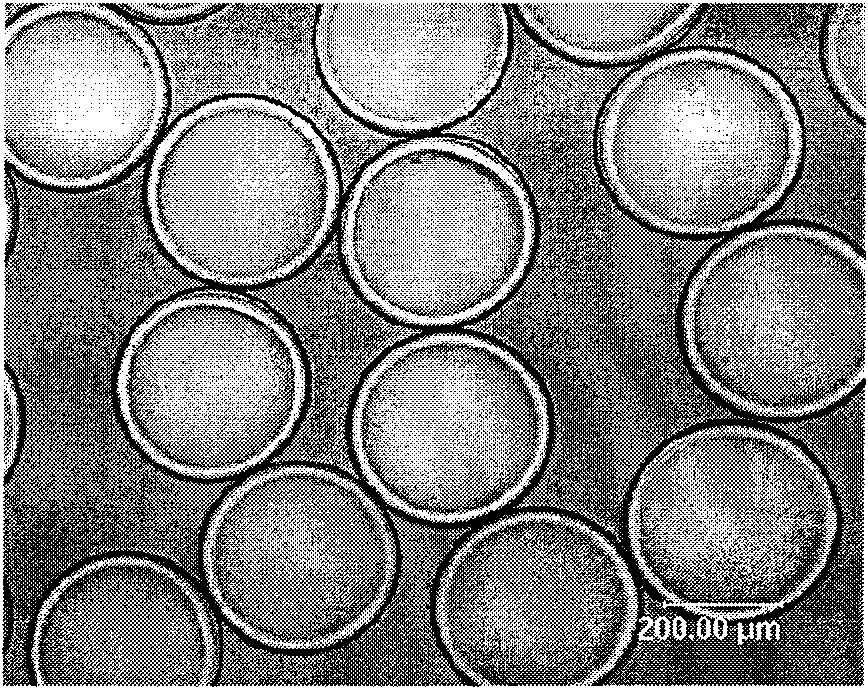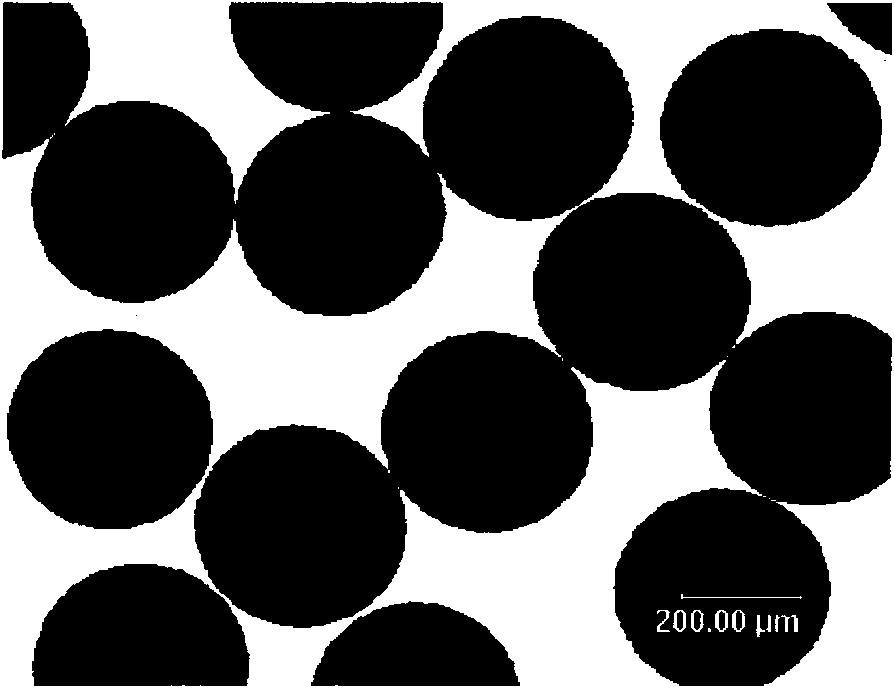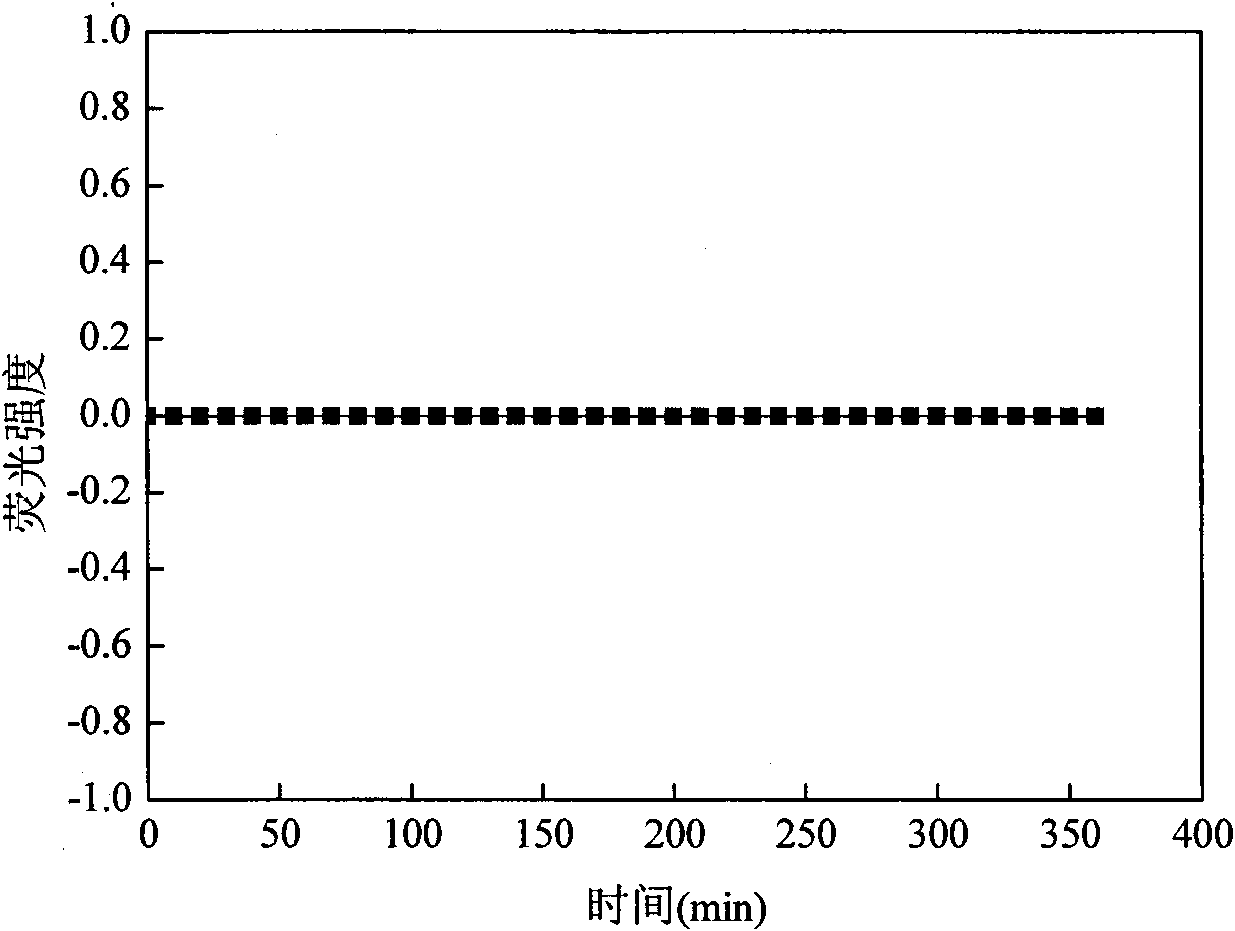Preparation method of microcapsule with function of immune isolation
A technology of microcapsules and preparation methods, applied in microcapsule preparations, microsphere preparation and other directions, can solve the problems of lack of immune isolation performance, inability to isolate IgG, etc., to ensure the needs of cell growth and metabolism, and to be conducive to active preservation and reaction conditions. mild effect
- Summary
- Abstract
- Description
- Claims
- Application Information
AI Technical Summary
Problems solved by technology
Method used
Image
Examples
Embodiment 1
[0022] 1. According to the method of reference [Chinese Journal of Organ Transplantation, 2003, 24 (2):: 86-88], sodium alginate-chitosan microcapsules embedded with islet cells were prepared, and the microcapsules were immersed in a concentration of 0.05% (w / v) sodium alginate solution, reacted for 20 minutes.
[0023] 2. After washing with physiological saline, immerse the microcapsules in step 1 in a chitosan solution with a concentration of 0.05% (w / v), a molecular weight of 100,000, a deacetylation degree of 95%, and a pH of 6.0, and react for 20 minutes.
[0024] 3. After washing with physiological saline, immerse in a sodium alginate solution with a concentration of 0.05% (w / v), and react for 20 minutes.
[0025] 4. Wash with normal saline and store in normal saline ( figure 1 ).
[0026] 5. Take about 300-500 microcapsules on a glass slide, blot the surface moisture, and add 0.5mL dropwise to a concentration of 2.0mg·mL -1 FITC fluorescently labeled protein solution...
Embodiment 2
[0028] 1. According to the method of reference [Chinese Journal of Organ Transplantation, 2003, 24 (2):: 86-88], sodium alginate-chitosan microcapsules embedded with hepatocyte HepG2 were prepared, and the microcapsules were immersed in a concentration of 0.1 % (w / v) sodium alginate solution, reacted for 10 minutes.
[0029]2. After washing with physiological saline, immerse the microcapsules in step 1 in a chitosan solution with a concentration of 0.2% (w / v), a molecular weight of 60,000, a deacetylation degree of 95%, and a pH of 6.5, and react for 10 minutes.
[0030] 3. After washing with physiological saline, immerse in a sodium alginate solution with a concentration of 0.1% (w / v), and react for 10 minutes.
[0031] 4. Wash with normal saline and store in normal saline.
[0032] 5. Operate according to step 5 of Example 1 to investigate the immune isolation performance of the microcapsules. The results show that the fluorescence intensity of FITC-IgG in the capsule is ze...
Embodiment 3
[0034] 1. According to the method of reference [Chinese Journal of Organ Transplantation, 2003, 24 (2):: 86-88], sodium alginate-chitosan microcapsules embedded with embryonic stem cells were prepared, and the microcapsules were immersed in a concentration of 0.1% (w / v) sodium alginate solution, reacted for 10 minutes.
[0035] 2. After washing with physiological saline, immerse the microcapsules in step 1 in a chitosan solution with a concentration of 0.2% (w / v), a molecular weight of 20,000, a degree of deacetylation of 98%, and a pH of 6.8, and react for 5 minutes.
[0036] 3. After washing with physiological saline, immerse in a sodium alginate solution with a concentration of 0.1% (w / v), and react for 10 minutes.
[0037] 4. Repeat step 2 after washing with normal saline.
[0038] 5. Repeat step 3 after washing with normal saline.
[0039] 6. Wash with normal saline and store in normal saline.
[0040] 7. According to example 1 step 5, investigate the immune isolation ...
PUM
 Login to View More
Login to View More Abstract
Description
Claims
Application Information
 Login to View More
Login to View More - R&D
- Intellectual Property
- Life Sciences
- Materials
- Tech Scout
- Unparalleled Data Quality
- Higher Quality Content
- 60% Fewer Hallucinations
Browse by: Latest US Patents, China's latest patents, Technical Efficacy Thesaurus, Application Domain, Technology Topic, Popular Technical Reports.
© 2025 PatSnap. All rights reserved.Legal|Privacy policy|Modern Slavery Act Transparency Statement|Sitemap|About US| Contact US: help@patsnap.com



